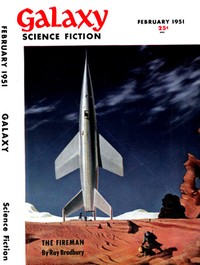Second Childhood by Clifford D. Simak
"Second Childhood" by Clifford D. Simak is a science fiction novel likely written in the early to mid-20th century. The narrative explores the complex notion of immortality and the psychological burdens it brings, questioning what it truly means to live a fulfilling life when death is no longer an option. The book delves into themes of memory, identity, and the innate desire for innocence, encapsulated in the experiences of its protagonist. The
story centers around Andrew Young, a man who has lived for nearly six thousand years due to a technological breakthrough that grants immortality. However, instead of the joy and fulfillment traditionally associated with such an existence, Young finds himself grappling with profound loneliness and disillusionment, having lost all meaningful connections as his friends and loved ones have passed away. In a desperate attempt to escape the weight of his long memories and rekindle the joy of childhood, Young petitions a commission for the right to end his life. Yet, rather than succumb to despair, he embarks on a journey to recreate the wonder of his early years by building a life-sized, childlike world. Through ingenious means, including a designed android meant to serve as a nurturing figure, Young realizes a path back to the simplicity and innocence of childhood, ultimately seeking to reclaim his lost happiness. The novel thoughtfully examines the human experience in the context of prolonged existence, illustrating the profound effects of time on memory and emotion. (This is an automatically generated summary.)
Read now or download (free!)
| Choose how to read this book | Url | Size | ||||
|---|---|---|---|---|---|---|
| Read online (web) | https://www.gutenberg.org/ebooks/51037.html.images | 63 kB | ||||
| EPUB3 (E-readers incl. Send-to-Kindle) | https://www.gutenberg.org/ebooks/51037.epub3.images | 165 kB | ||||
| EPUB (older E-readers) | https://www.gutenberg.org/ebooks/51037.epub.images | 164 kB | ||||
| EPUB (no images, older E-readers) | https://www.gutenberg.org/ebooks/51037.epub.noimages | 78 kB | ||||
| Kindle | https://www.gutenberg.org/ebooks/51037.kf8.images | 202 kB | ||||
| older Kindles | https://www.gutenberg.org/ebooks/51037.kindle.images | 195 kB | ||||
| Plain Text UTF-8 | https://www.gutenberg.org/ebooks/51037.txt.utf-8 | 56 kB | ||||
| Download HTML (zip) | https://www.gutenberg.org/cache/epub/51037/pg51037-h.zip | 150 kB | ||||
| There may be more files related to this item. | ||||||
Similar Books
About this eBook
| Author | Simak, Clifford D., 1904-1988 |
|---|---|
| Illustrator | Hunter, Don |
| Title | Second Childhood |
| Series Title | Produced from Galaxy Science Fiction February 1951 |
| Note | Reading ease score: 84.4 (6th grade). Easy to read. |
| Credits |
Produced by Greg Weeks, Mary Meehan and the Online Distributed Proofreading Team at http://www.pgdp.net |
| Language | English |
| LoC Class | PS: Language and Literatures: American and Canadian literature |
| Subject | Science fiction |
| Subject | Short stories |
| Subject | Immortality -- Fiction |
| Category | Text |
| EBook-No. | 51037 |
| Release Date | Jan 25, 2016 |
| Copyright Status | Public domain in the USA. |
| Downloads | 166 downloads in the last 30 days. |
| Project Gutenberg eBooks are always free! | |

